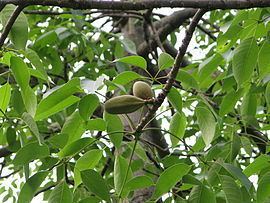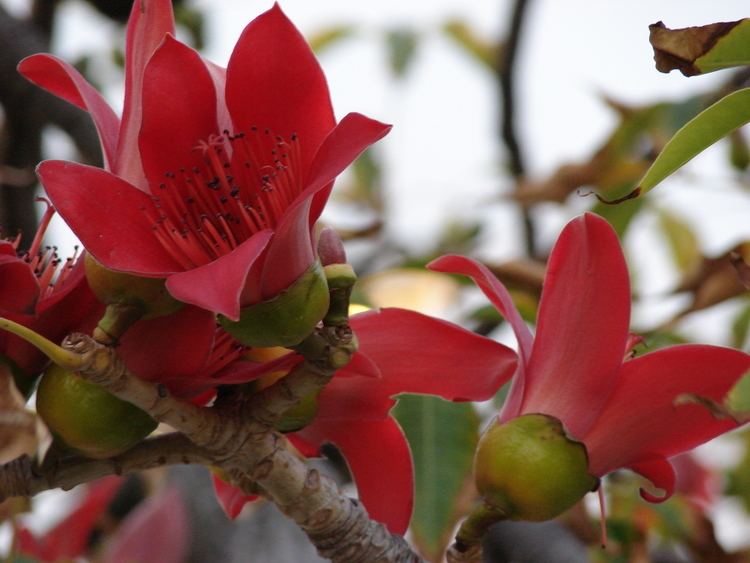Scientific name Bombax Rank Genus | Higher classification Bombacaceae | |
Lower classifications Bombax ceiba, Bombax mossambicense | ||
White silk cotton tree kopok tree bombax pentandrum ceiba pentandra
Bombax is a genus of mainly tropical trees in the mallow family. They are native to western Africa, the Indian subcontinent, Southeast Asia, as well as subtropical regions of East Asia and northern Australia. Distinguish from the genus Ceiba which has whiter flowers.
Contents
- White silk cotton tree kopok tree bombax pentandrum ceiba pentandra
- Bombax ceiba or semal tree
- Description
- Species
- Formerly placed here
- Castle of the Devil
- Religious importance
- References

Common names for the genus include silk cotton tree, simal, red cotton tree, kapok, and simply bombax. In Chinese they are known as Mumian (Chinese: 木棉; pinyin: mùmián), meaning "tree cotton". Currently four species are recognised, although many plants have been placed in the genus that were later moved.

The genus is best known for the species B. ceiba, which is widely cultivated throughout tropical and sub-tropical regions of the world. It is native to southern and eastern Asia and northern Australia.

Bombax species are used as food plants by the larvae of some Lepidoptera species including the leaf-miner Bucculatrix crateracma which feeds exclusively on Bombax ceiba.

The tree appears on the flag of Equatorial Guinea.
Bombax ceiba or semal tree
Description

Bombax species are among the largest trees in their regions, reaching 30 to 40 metres in height and up to three metres trunk diameter. The leaves are compound with entire margins and deciduous, being shed in the dry-season. They measure 30 to 50 cm across and are palmate in shape with five to nine leaflets. The calyx is deciduous, meaning it does not persist on the fruits. They bear five to ten cm long red flowers between January and March while the tree is still leafless. The stamens are present in bundles in two whorls, while the staminal column lacks lobes. The ovary matures into a husk containing seeds covered by a fibre similar to that of the kapok (Ceiba pentandra) and to cotton, though with shorter fibres than cotton, that does not lend itself to spinning, making it unusable as a textile product.
Species
Formerly placed here
Castle of the Devil
According to the folklore of Trinidad and Tobago, the Castle of the Devil is a huge silk cotton tree growing deep in the forest in which Bazil the demon of death was imprisoned by a carpenter. The carpenter tricked the devil into entering the tree in which he carved seven rooms, one above the other, into the trunk. Folklore claims that Bazil still resides in that tree.
Religious importance
Bombax in Sanskrit is known as Shaalmala. According to Hindu Scriptures Shalmala Dweepa or Shalmala Island is one of the Seven Continents of the world. Though geographically the Island is not yet been identified, It is believed that South Asian Subcontinent is perhaps regarded as Shalmala. The tree is also regarded as incarnation of Lord Vishnu according to traditional Hindu Belief.
